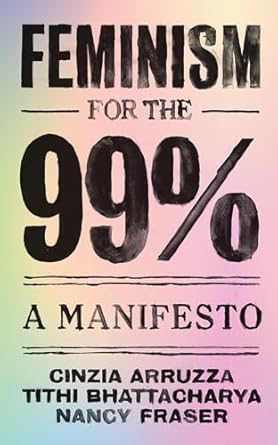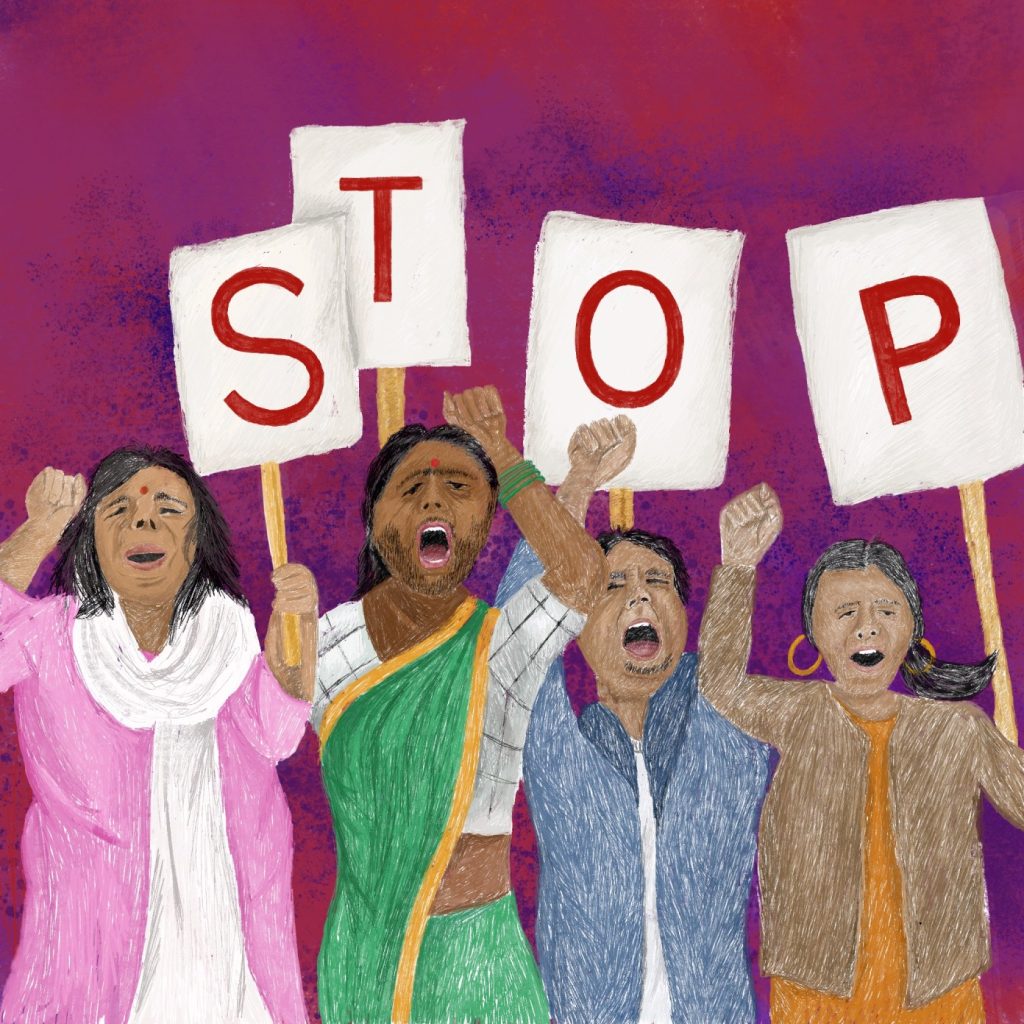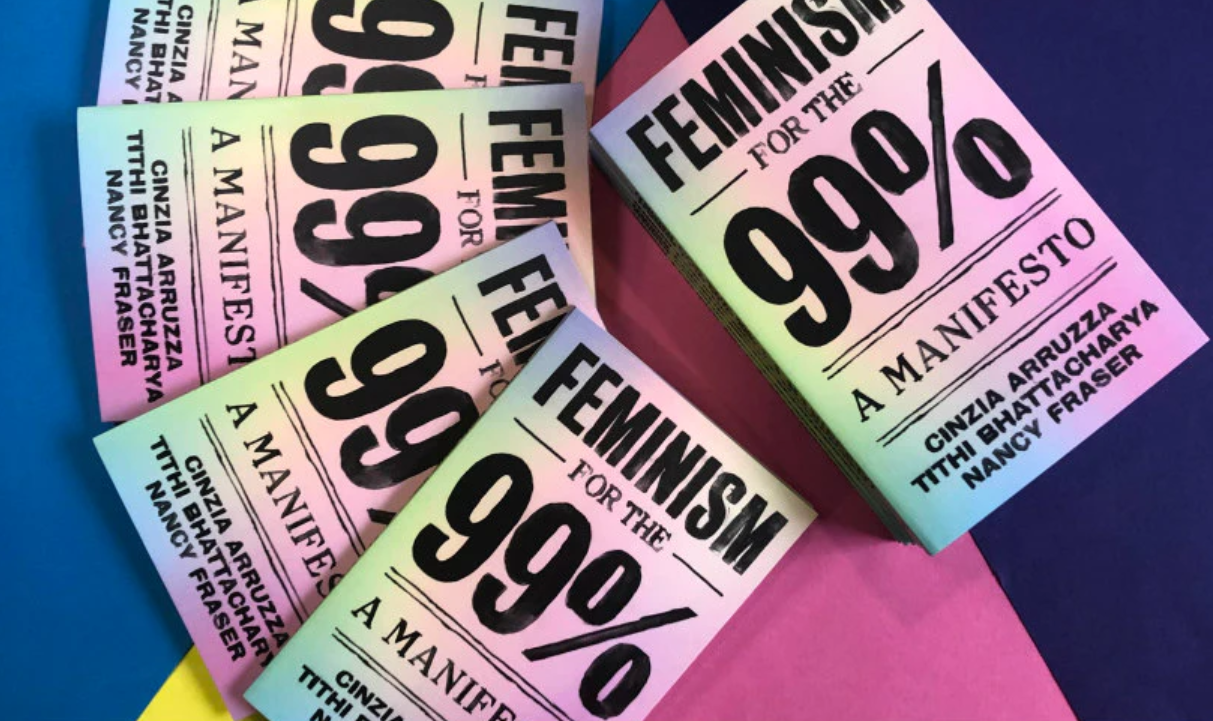Feminism for the 99% by Nancy Fraser, Tithi Bhattacharya and Cinzia Arruzza is an intricate amalgamation of theoretical rigour, foresightedness and political commitment towards a revolutionary pro-working class, environmentalist, anti-racist and internationalist feminism.
This seminal work is a voice of hope amidst the severe despair as extreme economic inequality, the rise of authoritarianism, militarism and repeated climate catastrophes have enveloped our lives. The book points to the possibility of liberation through collective mass action.
An emancipatory bottom-up methodology
Mao Zedong once remarked on the necessity of learning from the masses who according to him possess boundless creative powers saying, “We must esteem them as teachers, learning from them respectfully and conscientiously. We must not pretend to know when we don’t know.” The authors of Feminism For the 99% have been successful in doing so to a great extent.

The book aims to develop a comprehensive framework of theory and praxis of transformative revolutionary action based on the feminist strikes, marches, demonstrations, and direct action against sexual violence, femicide, denial of reproductive justice and unequal wages in Poland, Spain, Argentina and all across the world.
The writers themselves being organisers of the International Women’s Strike of 2017-18 have functioned as organic intellectuals according to Gramsci because their understandings of feminism are drawn from the lived experience of the dissident women whose racialised and gendered labour is rendered invisible by neoliberalism’s culture industry. The metaphors, definitions and meanings employed by them are drawn from the women on the frontline themselves. These feminist strikes have underscored the indispensable role that care work i.e. those paid and unpaid work that reproduce and sustain human communities in maintaining neoliberalism. This work is unacknowledged, violently racialised and gendered. The authors have thus picked up the revolt of the caring classes as sites of revolutionary transformation.
The monstrous cohabitation of patriarchy and neoliberal neoliberalism
Neoliberalism and patriarchy reinforce one another through the rigid separation of people making from profit-making while devaluing the former, institutionalising sexual violence and coercing sexuality.

Commodity production under neoliberalism thrives on the unpaid labour of women, especially from minority ethnic, religious and national groups. Activities like nurturing children, socialising children into submissive ‘potential workers,’ cooking, taking care of the sick and elderly, and cleaning homes alongside providing wage labour are predominantly women’s work, without which it will be impossible for the factory system and wage workforce to function. Women contribute to 1640 hours in 64 countries daily without being remunerated reports the International Labor Organisation. It is the fundamental contradiction of neoliberalism that although it thrives on this labour it systematically downgrades it through massive underfunding of public schools, child care centres, and public transport.
In addition, it slashes the wages of nurses, babysitters, and teachers pushing the entire burden of care work on women in the households destroying our collective capacity to take care of ourselves, our families and communities. The idea of feminine morality produced during Victorian age capitalism eulogises housework and childcare specifically to control the reproductive labour of women to ensure a smooth supply of the industrial workforce. Neoliberalism renders working-class women dependent not only on the owners of capital but also on wage-earning male workers (spouses). They are paid less, denied proper hygienic bathrooms and sanitary pad vending machines, discriminated against for absence due to menstrual cramps, lack of paid leave, and humiliated for not being productive enough, ( an extremely difficult job for women having to balance between domestic and workplace chores) restricting them to care work.
During the COVID-19 pandemic, women were the main casualty of cost-cutting efforts.
Neoliberal neoliberalism intensifies the level of violence against women and gender minorities. Domestic violence has intensified under neoliberalism because of the underfunding of shelter homes as anti-austerity measures in countries like Britain. Women pertain to self-blaming when faced with violence because schools, mass media, advertising industry socialise women into being good mothers and good wives.
The authors contend that ‘carceral feminism,’ is a blunt discourse It ignores the whole spectrum of violence perpetrated by the police, border patrols, and military forces while the law enforcement agencies adopt excessively punitive measures against poor working-class black men. The authors further explore the process by which sexual violence is employed as a means to police the labour force and control unionisation in the Export Processing Zones (EPZs).
Heteronormativity serves neoliberalism because gender binaries enable the effective division of workers into wage and care workers. The family is a means to reproduce labour and so same-sex unions are undesirable. States that promote neoliberalism build a fake narrative of protecting the LGBTQIA+ community by legalising same-sex relationships but stifling the lives of poor non-binary people by expanding the cost of sex reassignment surgeries and other measures that deteriorate their living conditions. The market industry tries to co-opt the queer liberation movement as a means to marketise products. Genuine queer liberation is possible only by ensuring decent living standards for the vast majority of poor queer people.
The authors demonstrate why feminism for the 99% must be staunchly anti-imperialist. Imperialism is itself founded on a patriarchal thought process. Chandra Talpade Mohanty, the renowned feminist scholar explains this phenomenon in the context of US foreign policy by asserting that “militarised forces are often required to police and control ‘cheap female labour’ and it serves the regressive gendered ideologies that consolidate the racialised hegemonic and subordinate masculinities necessary to the us imperial project.” Mohanty also takes into account imperialist feminist ideologies used to legitimise western neo-colonial projects in West Asia with an ostensible objective of rescuing women therein from so-called backward and fundamentalist Muslim men.

The process of feminising the colonised is a necessary precedent to justify colonial violence. Feminism for the 99% calls for internationalist struggles against neo-colonial wars that dispossess thousands of women who end up as undocumented migrants in the global north. These undocumented migrants are relegated to a major proportion of care work like cleaning hotel rooms, private offices, and bedpans in hospitals and nursing homes. These jobs are extremely ill-paid, and workers are subjected to sexual assault but are unable to find any remedy for the fear of deportation.
The authors conclude by asserting that Feminism for the 99% must be environmentalist as climate catastrophes disproportionately affect women from the global south travelling long distances to fetch water or standing in long queues for water. 80 per cent of the climate refugees are women.
The book despite its emancipatory potential does not take into account the hegemonic apparatus of capitalism particularly schools, news agencies, and social media that is used to manufacture the consent of the oppressed in favour of the oppressor. It does not show what forms of organisation will enable the dissident feminists to counter this hegemony and establish alliances across cultural differences.
The book can be described as an invitation to its readers to expand their horizons of thought and action for a revolutionary transformation of the global system of racist capitalist patriarchy.
About the author(s)
Rohin Sarkar (preferred pronouns: he/him) is an eighteen year old teenager obsessed with critical theory, Anarchist studies and Ambedkarite literature. His passion other than academics include poetry by Faiz Ahmed Faiz and Habib Jalib along with Anarchist punk by David Rovics. He also enjoys Oxford style and British Parliamentary debating because it enables him to speak his mind without fear of being censured. When not studying or debating he is chatting on politics with his friends either on WhatsApp or in the college premises.





